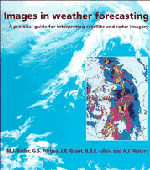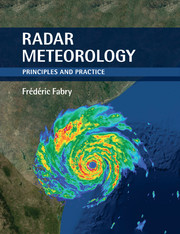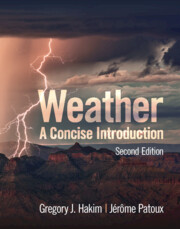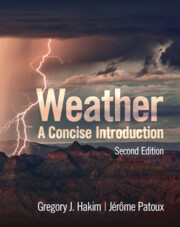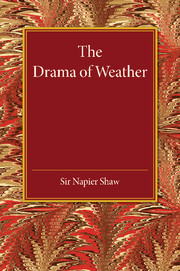Images in Weather Forecasting
This manual presents the meteorology student and operational forecaster with the current techniques for interpreting satellite and radar images of weather systems in mid-latitudes. The focus of the book is the large number of illustrations. Images are matched with conceptual models and weather charts. Written in an image-led mode, rather than in the style of a standard textbook on meteorology, the presentation allows the user to identify and interpret patterns on the images as easily and quickly as possible. Patterns observed in satellite and radar images have been explained in terms of basic archetypal airflows. Examples are presented showing variations on the basic archetypes for many regions. Material for the book has been provided by experts from North America and Europe, and reviewed by people from universities, training establishments of meteorological services and operational forecasters.
- Hardback received exceptional reviews
- Paperback at cheaper price will sell to a whole new audience of students
- Large format and layout with busy operational user in mind
- Lavishly illustrated
- Emphasis on pattern recognition and interpretation for students and practitioners
Reviews & endorsements
Review of the hardback: 'Anyone who gets on top of everything in this beautifully produced book is likely to improve their forcasting success rate. The rest of us can simply enjoy the intoxicating mixture of order and chaos, as revealed in the images presented here.' New Scientist
'The editors should be congratulated in assimilating the vast amount of material from the many contributors mentioned. … The manual must be considered a quintessential asset and will remain so probably for the next ten years at least. … Although there is a great deal of material with hundreds of examples, the contents are laid out in a logical fashion so that the reader can use the manual as a quick reference if needed.' Nick Grahame, Weather
'In conclusion, this manual has much to recommend it. It treats, in a very practical and up-to-date way, the whole range of mid-latitude weather systems, giving theoretical insight to the operational forecaster and presenting the observational aspects to the dynamical researcher. Both groups would benefit from having ready access to this text.' Keith Watson, Quarterly Journal of the Royal Meteorological Society
'There has been a need for such a manual from the community of operational forecasters for a long time. ... The reader will certainly be astonished by the wealth of information that can be extracted from apparently simple images. ... The book is highly recommended for all operational forecasters. It may also be used as a textbook in undergraduate or graduate courses of synoptic, satellite and radar meteorology.' World Meteorological Organization Bulletin
'The sheer size of this hard-back manual immediately suggests that a huge amount of work has gone into its preparation. … The editors should be congratulated in assimilating the vast amount of material from the many contributors mentioned. … The manual must be considered a quintessential asset and will remain so probably for the next ten years at least. … Although there is a great deal of material with hundreds of examples, the contents are laid out in a logical fashion so that the reader can use the manual as a quick reference if needed.' Nick Grahame, Weather
'As a compilation of proven image interpretation techniques from experts around the world, this book provides a valuable resource and learning tool for the conceptually minded meteorology student or operational forecaster who wishes to more fully exploit visible and infrared satellite and radar data.' Daphne S. Zaras, EOS
Product details
July 1997Paperback
9780521629157
523 pages
250 × 251 × 29 mm
1.715kg
893 b/w illus. 70 colour illus. 9 tables
Unavailable - out of print March 2000
Table of Contents
- Foreword
- Introduction
- 1. Satellite imagery
- 2. Radar imagery
- 3. Synoptic-scale cloud and moisture patterns
- 4. Fronts and waves
- 5. Depressions in mid-latitudes
- 6. Convective cloud patterns
- 7. Fog and low cloud
- 8. Orographic and polar phenomena
- Glossary
- Index.

